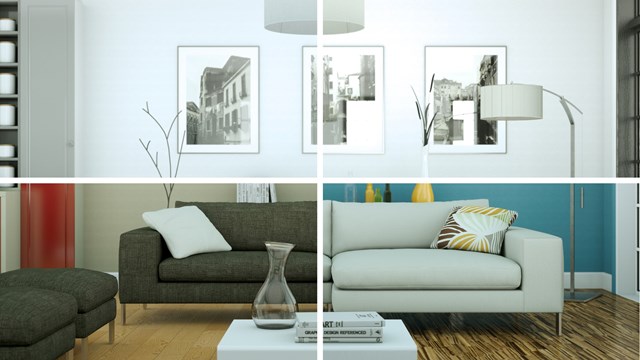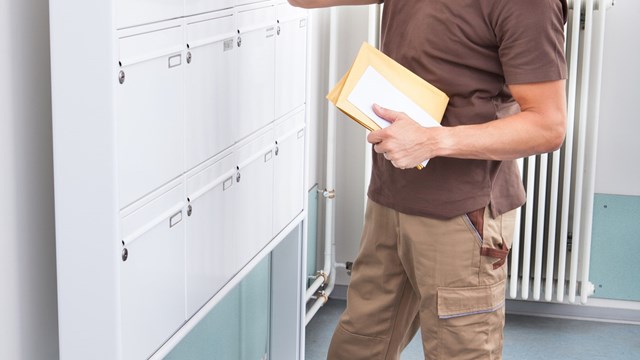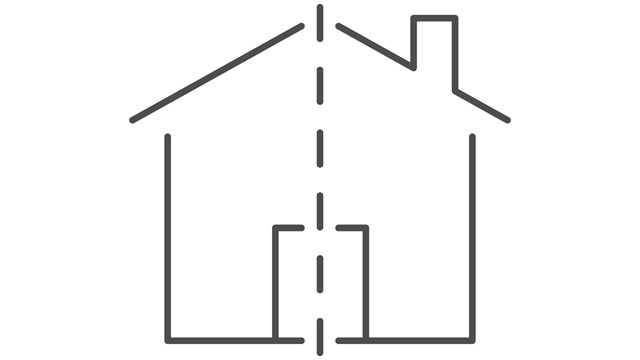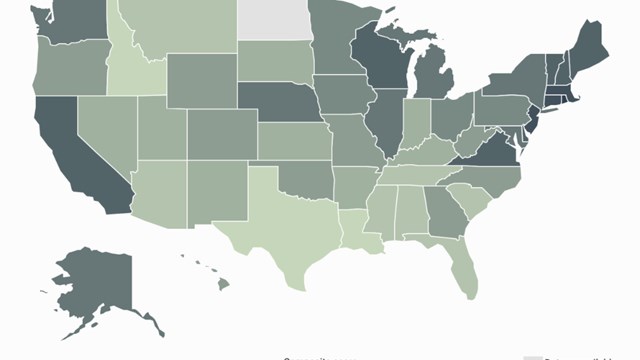It’s become a mantra (or maybe a cliche): The Pandemic Changed Everything. The way we work, the way we play—the way we live. While the health crisis may be waning, it’s likely that many of these changes will be permanent. The pandemic has also changed the way we look at the spaces we live in. Prior to the arrival of COVID, we viewed some elements of apartment design—a home office nook, say, or that holy grail of urban living, private outdoor space like a balcony, terrace, or patio—as a luxurious perk. Post pandemic, these same amenities have become critical to new apartment design.
A Lasting Legacy
“It’s not surprising that we look at our apartments differently post-pandemic,” says Prosha Korangy, principal of New York City-based Prosha Interiors and Design. “We pay more attention to increasing functionality and cleanliness in small spaces. Your living room is a home office with a Peloton, a place to eat or watch TV. During the pandemic, there was a common challenge to get fresh air since we had to isolate. Many often wished they had balconies or open common spaces. As a result, the future of multifamily housing will account for social distancing standards and prioritize outdoor spaces.”
“The primary shift above all others has been philosophical,” says Antonio Argibay, founder and managing principal of New York City-based architectural and design firm Meridian Design Associates. “Prior to the pandemic, the home was a place where you went to sleep during the week. Then it suddenly became a place where you lived all the time. You worked at home, too, of course, but I emphasize live because the pandemic shifted the work/life balance significantly towards paying attention to your life. For families with children and pets, having an at-home office—a place where you can close the door, have a desk with your computer and video conferencing—has become imperative. For people with limited space, it’s become a question of modifying a living space or bedroom for the same use. New interior design for homes provides planning for these types of spaces, no matter the size of dwelling.”
“A major directional change in apartment design,” says Colleen Clinton, a project manager and stager with Blissful Road, a design firm located in Hoboken, “is a movement away from open-concept living within an apartment. That open-living trend is now fading as people are creating private office spaces and home gyms. Those spaces, particularly offices, need to be self-contained in multi-person households.”
Practical Thinking
In a limited space like an apartment, architects and designers must consider what changes to usage and layout are most important and most necessary for the occupants. For instance, is a work space more critical than an exercise space? Could the two be combined in a flexible manner? Does outdoor space trump flexible interior space in the event of another COVID-type emergency?
“As part of the work-life balance shift towards life,” says Argibay, “exercise has become an important consideration in apartment design. The consideration hasn’t all been towards providing a space for equipment, but rather a mindset shift that you need space to stretch and to do a variety of equipment-free exercise activities, like yoga. So at the very least, a clean, open, multi-purpose space is needed. In that regard, uncluttered—what some might call minimalist—interiors with rearrangeable furnishings has become the norm, especially for smaller spaces, as have private outdoor areas such as balconies. In new construction, amenity spaces of all types including exercise areas have become very important. Many times those areas are preferred to outdoor areas.”
Korangy observes that “many clients started their renovations by redesigning a bathroom or a kitchen, but they saw the value in designing multifunctional spaces, and it turned into a gut renovation. The use of materials like copper, non-porous stones, and performance materials that can handle deep-cleaning is now very popular. Hideaway beds, dimmable lighting to alter the mood, extra storage, and sound-reducing materials are becoming in-demand features to support those working from home.”
Clinton notes that work- and exercise-at-home spaces, as well as private outdoor areas, are now commonly incorporated into new residential designs, and likely will become de rigueur going forward. When it comes to renovating units in older buildings, she says she’s seeing existing apartments being creatively reconfigured to provide use-specific spaces.
The Bigger Picture
The pandemic has also promoted a more holistic approach to viewing entire multifamily buildings—particularly new construction—as organic, self-contained communities unto themselves. Co-ops and condominium associations learned how to manage their shared spaces more effectively during the pandemic to encourage safe social interaction; this in turn sparked a changed view of physical structures as well.
“There is an increased demand for more areas devoted to common multipurpose uses,” says Argibay. “The rise of game rooms—or spaces that can be used as such—became very popular in high-rise buildings during the pandemic for social reasons. Prior to that, socializing was often just something done in elevators for thirty seconds. Many people in large buildings now realize that socializing with neighbors can be a fun part of their lives, and in general prefer to be in buildings that foster that social interaction. Now people can meet and form interest groups, play cards, or have book clubs.
“Prior to the pandemic,” continues Argibay, “the design emphasis was on lobbies and circulation areas. It was important that these spaces portray a contemporary and well-maintained image. Post-pandemic, the most radical changes we have seen are in high-rise buildings, particularly the desire to make roofs into landscaped social areas.” Roof areas are both private to the community and outdoors, which helps ease concerns around spreading germs. “While this trend was certainly present in both commercial and residential buildings prior to the pandemic, it has now become a necessity. It also provides meaningful social space where neighbors can gather to socialize in groups or events.”
For building-wide projects, says Korangy, “the key is to have versatility and sustainability aided by technology-driven design. Sustainability continues to be at the forefront of many decisions among designers. We are constantly looking for earth-friendly materials or smart systems to make the most efficient space.”
Novel Ideas
In addition to the obvious changes resulting from the pandemic, co-op and condo boards are also paying attention to other factors affecting their buildings. “For starters,” notes Argibay, “is the proliferation of alternative urban vehicles like scooters, motorized boards, and unicycles that dominate the bicycle lanes of all major urban areas—and prominently in NYC as an alternative to mass transit. Much consideration and thought is being put into creating storage spaces to handle the huge increase in these items, and to provide charging areas for them. Retrofitting garages for EV charging stations in existing buildings and providing them in new developments has become the norm. It is now expected to have power sources to recharge all kinds of transportation, from cars to alternative vehicles.”
“New buildings are also creating common workspaces for residents,” says Clinton. “Older properties need to invest in renovations to maintain a competitive edge with the newer buildings. There is pressure to add more amenities. Overall, the idea is to create functional spaces. We are seeing more outdoor common spaces, Juliet balconies, grand balconies, rooftop space, pools, outdoor cooking spaces, and courtyards.”
The View from the Trenches
“Everyone wants a home office,” says Megan Fox, a broker with Compass in Ho-Ho-Kus. “Some buyers are even buying two bedrooms to turn one into a home office. Buyers are looking for separated spaces as well. We are seeing less ‘open concepts’ than we did before the pandemic. There is a return to tradition with separated rooms like dining spaces and libraries, and developers are keeping these details in mind.”
Diana Sutherlin, a broker and principal of the Sutherlin Group in Jersey City, has similar observations. “Everyone I meet wants a home office,” she says. “It’s non-negotiable. Outdoor space continues to be very important as well, especially for pet owners. Whether it’s for yoga, work, or elevated cooking stations in the kitchen, buyers are getting very creative with spaces, and they’re being much more vocal about their needs. Developers are including more amenities as well. Buyers want roof decks and outdoor space, both as part of the building and in-unit that feel like an oasis off of your primary rooms or entertaining spaces.”
While certainly everyone is more than ready for life to normalize in the post-
COVID era, many of the changes brought by the pandemic are likely to stick around—and if that means more outdoor spaces, more friendly interaction with neighbors, and easier work-from-home logistics, that may be a positive thing.
A J Sidransky is a staff writer/reporter for CooperatorNews, and a published novelist. He may be reached at alan@yrinc.com.










Leave a Comment